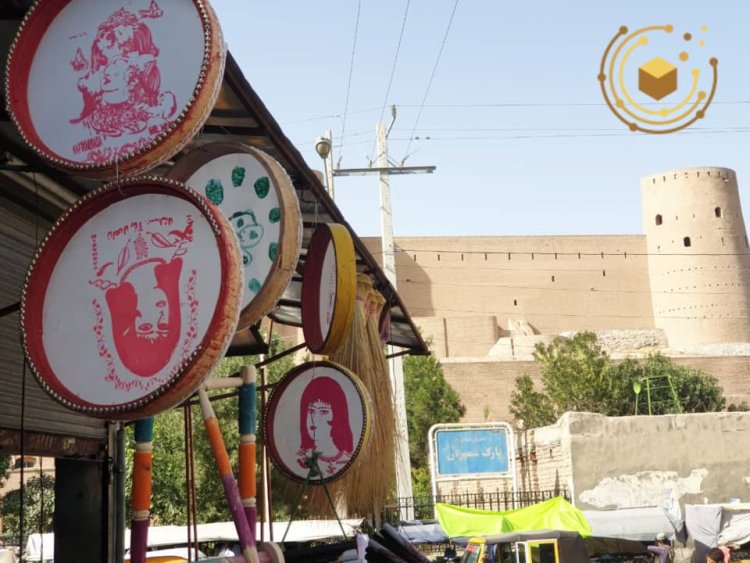"Musician, Strike the Daf!"

Special Report
The daf and the dayereh are traditional percussion instruments found in Afghanistan, Iran, and the broader Persian cultural sphere. These instruments consist of a wooden frame covered with a thin layer of skin, which is played by striking it with the fingers. The wooden frame often features small ornaments or jingles attached to it, enhancing its sound and aesthetic appeal. Historically, dayerehs were made from the skins of animals such as sheep and goats, but today, they are also manufactured in factories using plastic materials.
Although many people consider the daf and dayereh to be the same instrument, there are notable differences between the two. The daf is larger and has metal rings that produce a more resonant sound, making it a staple in Sufi and mystical ceremonies. The dayereh, being smaller, is more commonly used in celebrations and festive events.
The exact origin of the daf and dayereh is uncertain, but evidence suggests that these instruments have been used for thousands of years in ancient rituals and festivals. Some accounts indicate that the Aryans celebrated Nowruz and the New Year by playing the daf and dayereh. Additionally, during the Achaemenid and Sassanid periods, the daf and dayereh were important instruments in royal courts and religious ceremonies across the Middle East.
According to a BBC report, in some regions of Afghanistan, the dayereh is referred to as a daf. The local names for this musical instrument vary across different regions of Afghanistan: in Herat, Kabul, Badghis, and other major cities, it is called "dayereh"; in the Hazaragi dialect, "dariyeh"; in Nuristan, "bombok"; in Badakhshan, "daf"; in Ghazni, "dariyeh"; and in Paktia, "chamba." The daf and dayereh hold a special place in Afghanistan's musical culture and have been used in celebratory events such as weddings, Nowruz festivities, gatherings, and other traditional ceremonies since ancient times.
The prominence of the daf and dayereh extends to Persian music and literature, where they symbolize ecstasy, passion, and mysticism. Many traditional and folk songs are accompanied by these instruments, creating an intimate and familiar atmosphere for listeners. The daf, in particular, is central to Sufi rituals and the practice of "Sama" (spiritual dance). Jalal al-Din Muhammad Balkhi, known as Rumi, often referenced the daf in his poetry and spiritual teachings.
Similarly, great Persian poets such as Saadi, Bidel, Ferdowsi, and Hafez often highlighted the daf in their poetry, using it as a symbol of joy, allure, triumph, and mysticism.
The daf and dayereh have long been integral to Persian culture, serving as instruments of music, celebration, spirituality, and transcendence. Their sound resonates deeply with the inner emotions of the people in Persian-speaking lands, expressed at times through music, at times through poetry, and at times through the whirling dances of mystics.
